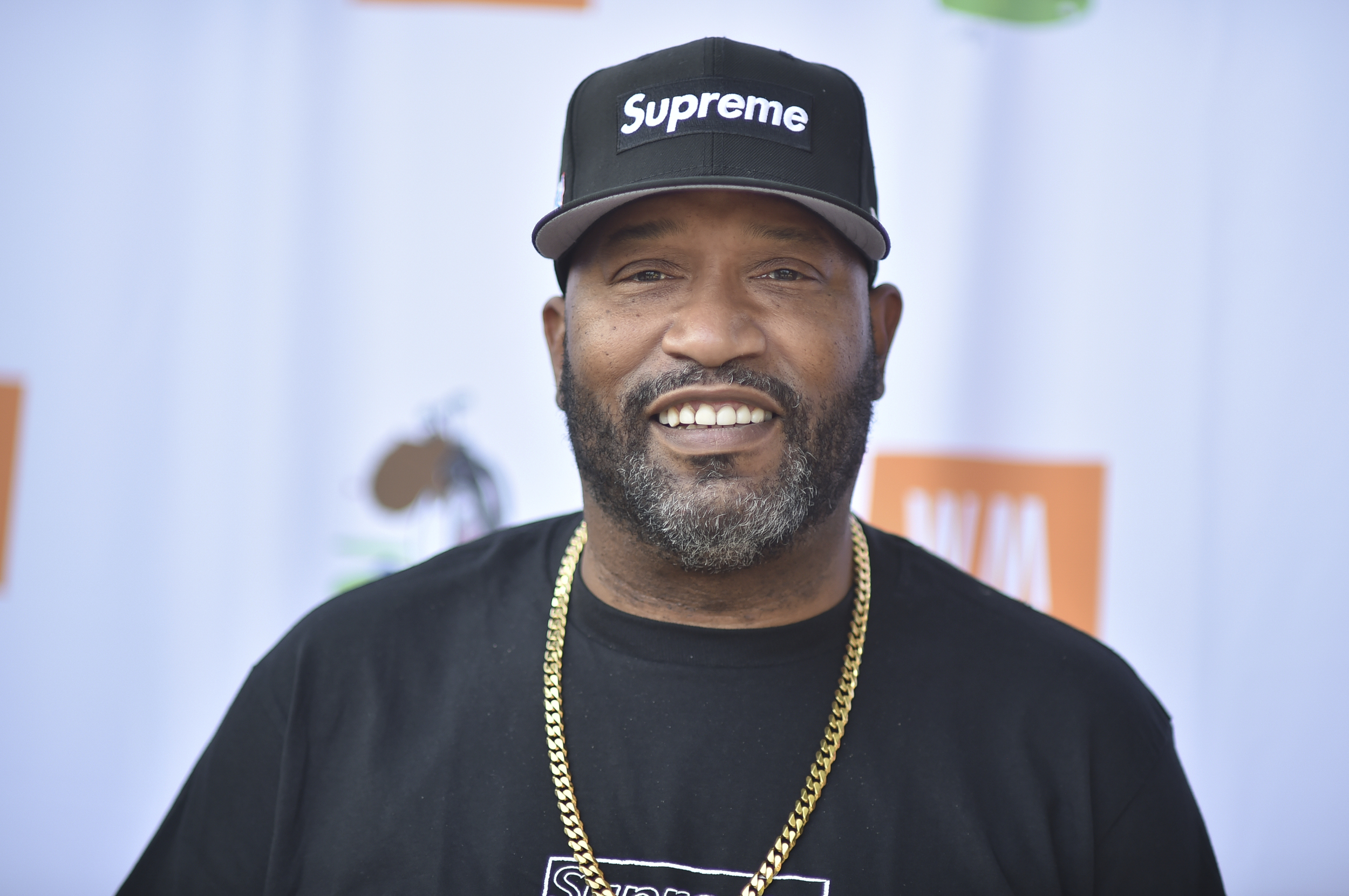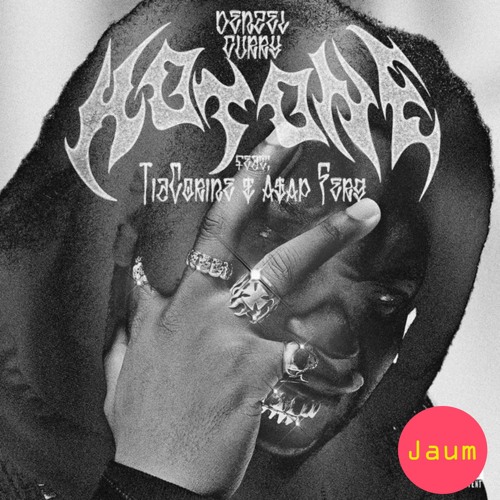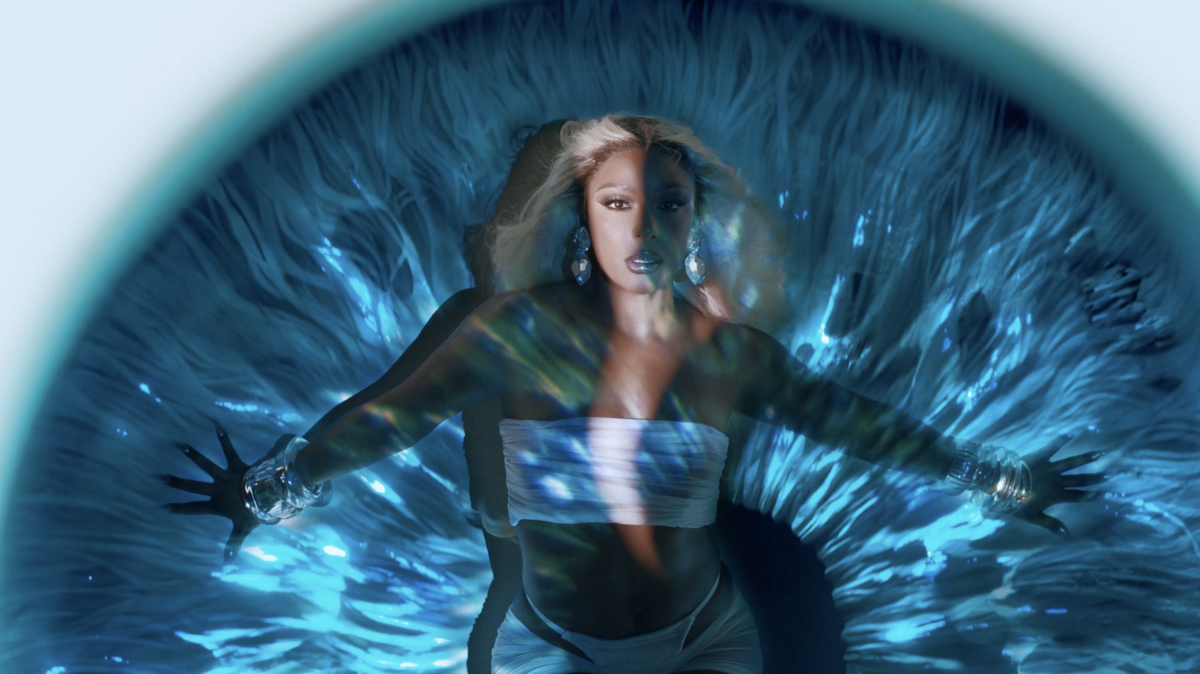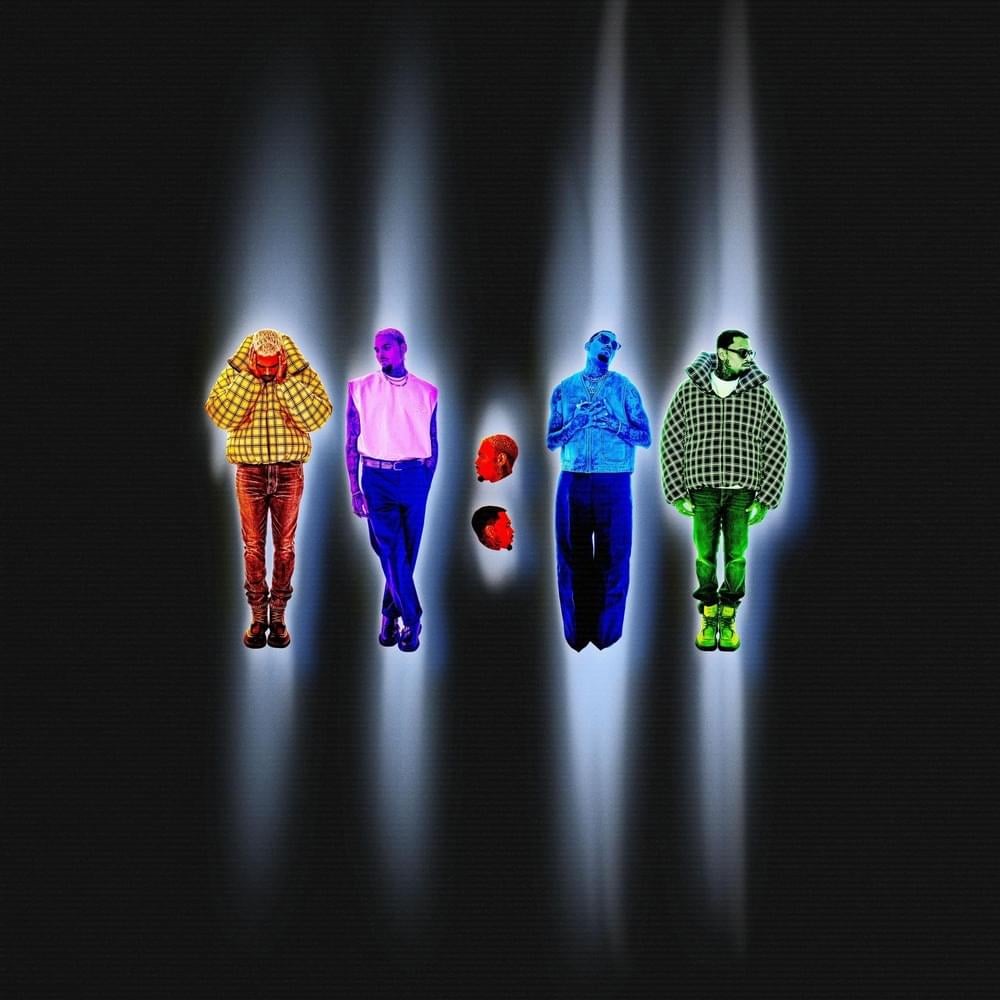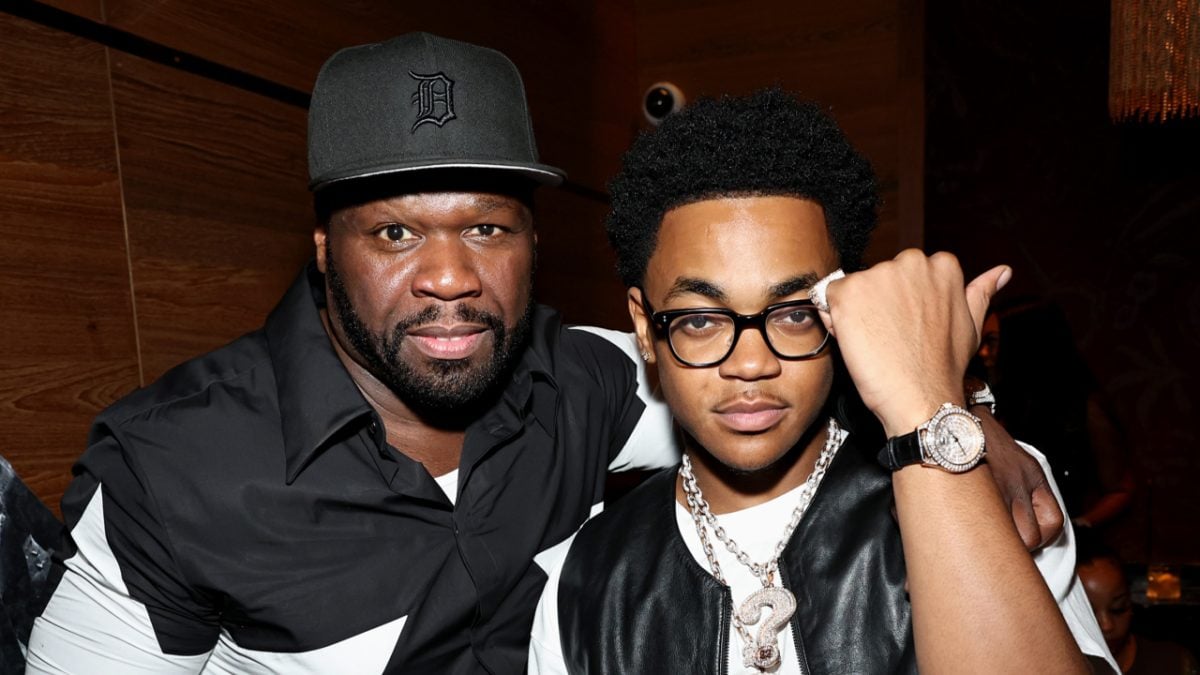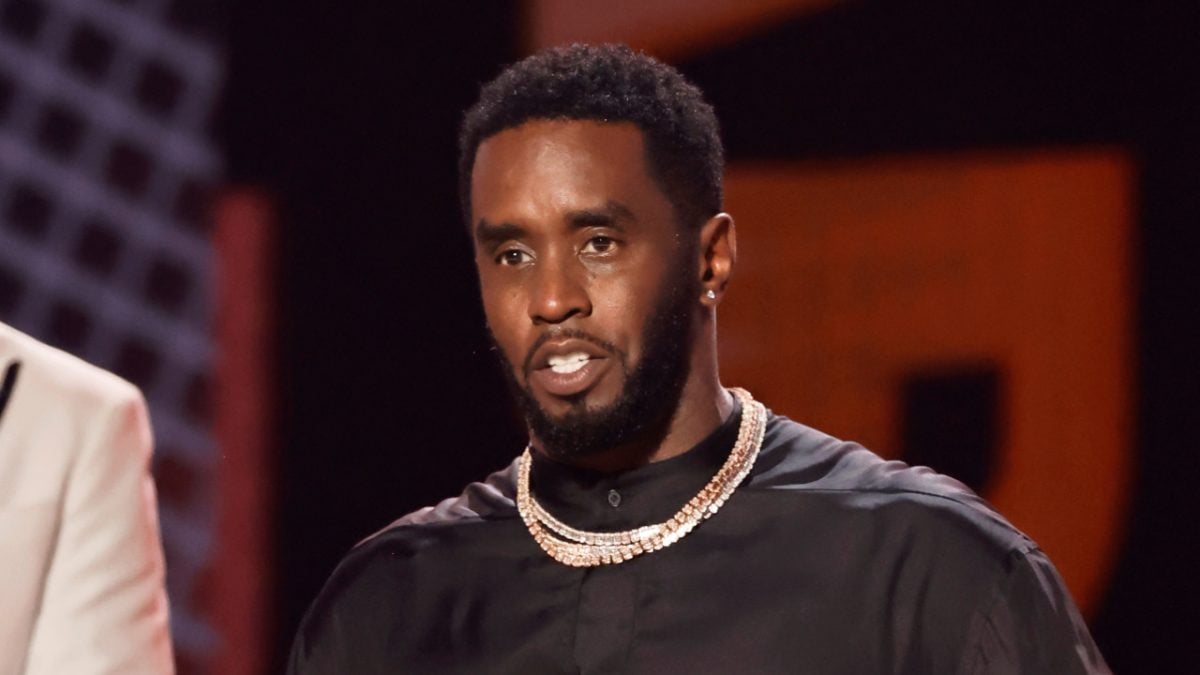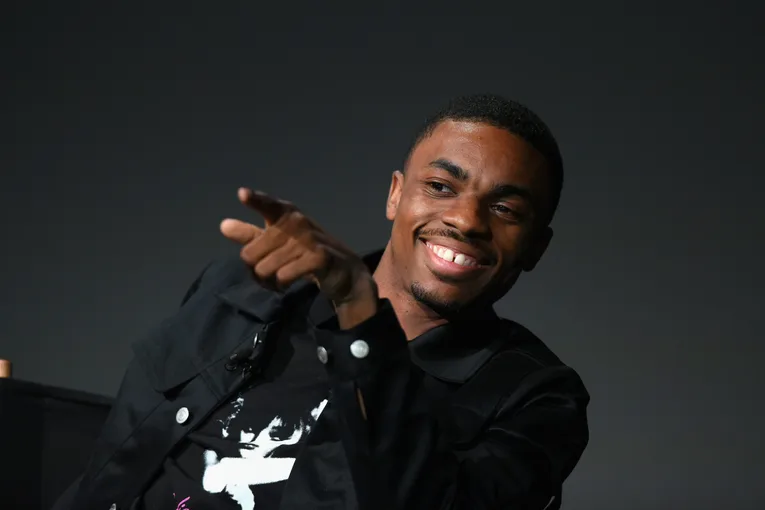Each Sunday, Pitchfork takes an in-depth look at a significant album from the past, and any record not in our archives is eligible. Today, we revisit Ice Cube’s 1990 debut solo record, a groundbreaking piece of hard and funky reality rap that introduced t
Ronald Reagan knew television. Broadcasting since the birth of the medium, he always understood exactly how he looked on the other side of the camera. He used TV to cast himself as a kindly septuagenarian who loved jelly beans and playing cowboy, while his aides prepped him not with foreign policy debriefings but by telling him what to do in a particular “scene.” His major political battles were waged by the combined force of law and the mass media against enemies foreign (the Soviet Union) and domestic (the poor, especially Black).
Throughout the decade, a credulous, ratings-hungry TV news media used Reagan’s “law and order” style of right-wing governance to cast young Black men as the nation’s primary criminal menace, known mainly by their Action News poses, described by Ice Cube on “Rollin’ Wit the Lench Mob”: “On my knees in the street /Interlock my hands and feet.” Los Angeles made a great staging ground for Reagan’s so-called war on drugs, and in 1989 the hardline, media-savvy LAPD Chief Daryl Gates invited Nancy Reagan (and a phalanx of TV reporters) to observe a staged raid on a suspected dealer. “The working press arrived to find Mrs. Reagan and Gates munching fruit salad in an air-conditioned motor home parked beside the alleged rock house,” reported the L.A. Times.
By the early 1980s, television had replaced the daily newspaper as the nation’s primary news medium. Increasingly, the cultural relevance or accepted truth of an event was only fully acknowledged once video surfaced on the nightly news, or an evening TV drama ripped the story from the headlines. TV’s unique capacity to absorb, juxtapose, and regurgitate current events through pre-existing genres and cutting-edge visuals would soon come to be characterized as “postmodern,” but a more useful term came from critic Todd Gitlin, who described ’80s TV programming as the ultimate “recombinant” platform. Writing in 1983 of TV shows and films mimicking the increasingly torrid pace of Reagan’s unregulated late-capitalist consumerism, Gitlin explained that “in a world stripped of transcendent unities, the strategy of collage, of juxtaposition, makes the best of a bad situation,” in which “order can be assembled only from the juxtaposition of shards.”
Pop music had been juxtaposing shards into new forms for decades by this point, and no form was doing so more virtuosically than hip-hop, whether via DJs looping rhythmic breaks or rappers adopting outlandish personae and shuffling through pop culture references. As hip-hop became more political, rappers started mimicking the news reporters who were constantly prowling around their neighborhoods. In 1982, Grandmaster Flash & the Furious Five’s “The Message” opened with Melle Mel braying a tabloid headline about the shards he saw all around him: “Broken glass, everywhere!” A year later, Run-D.M.C. debuted with their own form of recombinant street journalism by flipping Walter Cronkite’s epochal and confident CBS Evening News signoff—“And that’s the way it is”—to a mordant slogan for young Black no-hopers at the dawn of Reaganism: “It’s like that/And that’s the way it is.” A few years later, Public Enemy frontman Chuck D—who was born in 1960 and came of age during the peaks of Black Power and 1970s Black television—took the metaphor to its logical conclusion, telling Spin that “rap is Black America’s TV station,” a medium that “gives a whole perspective of what exists and what Black life is about.”
Ten years Chuck’s junior and perhaps his most prominent admirer, Ice Cube also came of age in front of the tube, and thought of his creative process via televisual metaphor. In a 1990 interview for the rap TV show Pump It Up, Cube pointed at his temples and told host Dee Barnes, “This is my VCR. I just like, go through the streets and live, and kinda observe.” Fittingly, the interview coincided with the release of Cube’s debut solo album AmeriKKKa’s Most Wanted, the title a timely riff on Fox television’s groundbreaking “reality” television program. America’s Most Wanted was itself very recombinant: host John Walsh addressed viewers from a set that merged the imagery of a TV police station, news studio, and charity telethon, introducing flashy, dramatic re-enactments of violent crimes for which the fugitives were still at large, then prompting viewers to call a 1-800 number with tips. Walsh himself had taken a unique path to fame: after the abduction and murder of his son, he became a national advocate for child safety, and was himself portrayed on TV by Hill Street Blues star Daniel J. Travanti in the blockbuster 1983 made-for-TV movie Adam.
With America’s Most Wanted, John Walsh repackaged his family’s trauma into the character of a mercenary news anchor: Cronkite with a dash of Dirty Harry. On “AmeriKKKa’s Most Wanted,” Ice Cube also plays an entertainingly inflated version of himself: an intelligent, cocky, and preternaturally media-savvy Black 20-year-old from South Central, who just so happened to have spent the previous summer with his previous group, N.W.A., being surveilled and harassed by cops across the midwest for the crime of writing and threatening to perform a song called “Fuck Tha Police.”
But apart from a quick “FBI on my dick, stay off!” in the third verse, Cube elides the previous year’s drama on the title track (he also saved his epochal N.W.A. diss for his next album). Instead, he casts himself as a fugitive from America’s Most Wanted’s armchair vigilantes, holing up in the hood after a profitable and fully armed “trip to the suburbs” a few weeks earlier. When he sees his face on television, he tries to make a quick escape, but has already been snitched on by a woman down the street watching the broadcast, and is immediately loaded into the back of a police cruiser. The lesson? The police will ignore him for robbing his “own kind,” but the second his character moves into white neighborhoods, he’s got a target on his back.
Cube’s larger point should sound familiar: Sister Souljah made it after the 1992 Los Angeles uprising and became a national pariah. It’s the same justification for why, apart from the police, pop radio was Cube’s biggest enemy, such that he devoted an entire AmeriKKKa track to assailing radio programmers’ fear of alienating advertisers with “real” Black music. A couple decades earlier, it was the same idea that kept the books, films, and recordings of some of Cube’s forerunners and inspirations—The Last Poets, Gil Scott-Heron, Rudy Ray Moore, Donald Goines, Melvin Van Peebles, Iceberg Slim—limited to Black bookstores, record shops, and nightclubs; and inspired J. Edgar Hoover to label the media-savvy armed revolutionaries the Black Panther Party as the “greatest threat to the internal security of the United States.” Less than 25 years after the passage of the Civil Rights Act, Cube and a new crop of vociferous young Black men were actively trolling “the color line”—a phrase popularized by W.E.B. DuBois in The Souls of Black Folk that still dominated U.S. race relations.
But at the dawn of the 1990s, it was clear that the latest front in the long-running war for Black American self-determination would be waged as a mass-media spectacle, attempting to counteract a vast new culture war. The struggle against a supposed coarsening of popular culture, led by far-right conservatives, evangelical Christian groups, and ad-hoc organizations like Tipper Gore’s PMRC, quickly filled the significant political gap left by the waning Soviet Cold War. Democratic congressman Sidney Yates explained it succinctly in a 1990 interview: “You’ve got a fight going on today that is just as emotional as the fight that took place (in the 1950s). Except communism isn’t the bogeyman. This time it’s pornography and obscenity.” Predictably, rappers would soon find themselves in the crosshairs of a media spectacle with dire political stakes.
Hip-hop’s ascendant political revolution would be televised, and not only via Cube licking shots at Soul Train and Arsenio Hall on AmeriKKKa, Public Enemy sending-up of B.E.T.’s news programming on “Night of the Living Baseheads,” or Ice-T squaring off with Tipper Gore on Oprah. After teaming up with P.E.’s production team the Bomb Squad, Cube and his producer Sir Jinx used the newly released digital sampler to mimic cable TV’s depthless channel-flipping phantasmagoria, stirring L.A. electro-funk, a bleak sense of humor, and plenty of TV clips into a fun-house mirror of It Takes a Nation of Millions to Hold Us Back’s ceaseless barrage of Malcolm X and James Brown soundbites. Taking additional cues from De La Soul’s skit-heavy, TV-poisoned masterpiece 3 Feet High and Rising and 3rd Bass’ sampledelic The Cactus Album, AmeriKKKa is what critic David Toop called “television structured music, influenced as much by tabloid news dramatizations as by the fragmentation of TV narrative by over-frequent commercial breaks.” Cube, Jinx, and the Bomb Squad were deploying Reagan’s preferred cultural weapon against the world he bequeathed them.
At the end of the skit that opens AmeriKKKa’s Most Wanted, during which Ice Cube is executed by electric chair, a man’s voice weaves its way into the soundscape: “Was America willing to maintain order, no matter what the cost?” The voice belongs to civil rights icon Julian Bond, narrating the landmark PBS civil rights documentary Eyes on the Prize about the heated late-1960s moment after the FBI had assassinated Black Panther Fred Hampton and police had opened fire on protesters at Attica prison. For Ice Cube, the answer to Bond’s question was an unqualified “yes”: The nation’s very existence was predicated on, at the very least, shutting people like Ice Cube up. But then the sample leads into “The N***a Ya Love To Hate.” Not only would he not shut up, but Cube fought back as the first major rapper to create a brand out of the language’s most notorious slur.
It started as trolling—Cube’s erstwhile collaborator MC Ren loved baiting white journalists into awkwardly saying it aloud during interviews. The word had been intellectually and politically reclaimed via the fire-and-brimstone soul of Curtis Mayfield, the incisive comedy and commentary of Richard Pryor and Dick Gregory, and the minimalist poetry of hip-hop’s politically minded originators. At the time, Cube would occasionally don a black ballcap with that word emblazoned on it. On AmeriKKKa’s single “Who’s the Mack?”, he clarifies that in lieu of the wide-brimmed hats and loud suits of hip-hop’s emergent pimp contingent, he’s “just a straight up N-I-double-G-A.”
The music video for “Who’s the Mack?” was where Cube first demonstrated his gift for cleverly assessing and satirizing Black pop culture. In the clip (directed by Alex Winter of Bill & Ted's Excellent Adventure), Cube positions himself as a different kind of “street reporter” than he was on “Fuck Tha Police” or “Straight Outta Compton.” Here, he addresses the camera like a TV newsmagazine host while DJ Pooh dramatizes different versions of young Black men trying to get over in the modern world: an abusive pimp throwing sex workers into the trunk of his car, a conniving “squeegee man” bugging motorists for change, and a sleazy ladies’ man talking about his hot tub to women at the club. To Cube, they’re all playing the same con game. Light years from Max Julien’s Goldie character, Cube democratized macking: At the end of the video, President Bush is “President Mack,” disgraced televangelist Jim Bakker is a “Busted Mack,” and over-leveraged Manhattan real-estate developer and soon-to-be-divorced tabloid icon Donald Trump is a “Broke Mack.”
The “Mack” track clearly demonstrated the possibilities of the Bomb Squad and Cube/Jinx’s creative and comedic mind-meld, weaving a period-appropriate sample from Marvin Gaye’s Trouble Man soundtrack with Shock G’s winking pimp caricature from the previous year’s pop crossover “The Humpty Dance.” When Cube and Jinx showed up in New York to record, P.E.’s production team sent them to scour a Long Island warehouse basement packed with records to find the samples they wanted to use. “With (the) Bomb Squad it was like, ‘We can’t go to the real studio until we fill these two crates up with records that you like,’” Cube recalled. A couple years before Dr. Dre re-cast P-Funk as G-Funk, “You Can’t Fade Me” flipped the smooth hook from “Rumpofsteelskin,” the Chuck D collaboration “Endangered Species (Tales From the Darkside)” used George Clinton’s “Bop Gun” scream, and “The Ni**a Ya Love To Hate” borrowed “Atomic Dog”s electro-thwack. AmeriKKKa’s production wasn’t nearly as earth-shatteringly great as the Bomb Squad’s on Fear of a Black Planet—the highest possible bar to clear, to be fair. In fact, the album’s best production moment comes on the all-too-brief dice-game drama “What They Hittin’ Foe?”, which sounds closest to what the Dust Brothers had just cooked up for Paul’s Boutique.
During production, Chuck D acted as something of an older brother to Cube. “You don’t gotta become conscious overnight, but you also have to grow,” Chuck said. Though AmeriKKKa was far from the political call-to-action Cube would shape for 1991’s Death Certificate, “Endangered Species”—the subtitle of which was cleverly flipped from the era’s creepiest syndicated TV horror show—laid out his politics clearly. After a news anchor frames the track like an investigative TV news report, Cube dismisses calls to ally with African freedom movements while describing Black Los Angeles as America’s own Bantustan, crawling with racist cops whose primary concern is adding to their personal body count of murdered Black youth. Cube raps it in an angry bark that was becoming his trademark sound. Where Chuck’s booming delivery channels Black oratory through Marv Albert, Cube in high dudgeon raps like a bully taunting you to your face, through a megaphone.
Off-record, Cube was dating a woman whom he’d marry in 1992 (and is still with). On wax, however, women were targeted as much as “the police, the media, and suckers that went pop,” never more than via the selfish asshole who narrates “You Can’t Fade Me.” An R-rated Maury episode a few years before the fact, the track cycles through numerous imagined and violent scenarios to avoid responsibility for a child: “Then I thought deep about giving up the money/What I need to do is kick the bitch in the tummy.” When critic Greg Tate asked Cube to explain that line, Cube replied, “Everybody has fantasies,” aligning the perspective with someone who imagines robbing a bank while waiting for a teller. (“You Can’t Fade Me” was actually quite tame compared to the Geto Boys’ gruesome 1990 track “Mind of a Lunatic,” on which the trio imagined themselves as the most sadistic, murderous villains imaginable.) On “It’s a Man’s World,” Cube’s protégé Yo-Yo plays the straight woman to Cube’s outsize sexist buffoon, but as a battle of the sexes, it’s not a fair fight. This is Cube’s world, and within it, women are required to contort to the vulgar imagination of a 20-year-old with plenty of emotional growing to do, but who still always gives himself the last word.
But at the same time, “You Can’t Fade Me” offers insight into Cube’s greatest gift: storytelling. It’s a macabre view into the mind of a young man with fucked-up priorities, but Cube lays it out with the condensed detail of Slick Rick or Ice-T. Cube’s preternatural skill at evoking the Black suburban experience that served as the mundane background to his gangsta fantasies is still somehow underappreciated, and “Once Upon a Time In the Projects” displays the youthful, creative demeanor that would produce Friday five years later. As the story opens, Cube’s in the family living room of a young woman he’s hoping to hook up with—naturally, the suburban chaos reminds him of Good Times and Robin Harris’ standup routine “Bebe’s kids.” But like an amateur version of a Richard Pryor bit, the scene quickly grows bizarre when, at the end of the first verse, Cube realizes he’s sitting in the front room of a crackhouse. When the cops show up, they misinterpret the word “dope” on his t-shirt and toss him and the girl into a police cruiser. Of course, there’s a moral: “Now the story you heard has one little object/Don't fuck with a bitch from the projects.”
On the surface, Cube’s politics on AmeriKKKa would appear to be a simple reactivation of the Panthers’ media-savvy push for Black liberation in the shadow of Reaganism, but clues to a deeper conservatism are everywhere. Not just in his consistently articulated belief that women were nothing more than sex objects to be used and discarded, but also in “Who’s the Mack?” when he instantly assumes that Black people asking for spare change are up to something sinister, or in “Projects,” when he says the woman’s gang-affiliated younger brother “needs to pull his pants up.”
It wasn’t a Bill Cosby-style integrationist conservatism that Cube aspired toward, but, as a 1990 Rolling Stone interview revealed, the worldview articulated by Louis Farrakhan and the Nation of Islam—whom the reporter observed Cube watching with interest on an episode of The Phil Donahue Show. Over the prior decade, Farrakhan had dragged the Nation of Islam from near-irrelevance onto television and into hip-hop lyrics, selling out Madison Square Garden with an ideology rooted in economic and social separatism. The “projects,” for Cube and Farrakhan, weren’t the symbolic origin of future Black success like they’d soon be for Nas and Jay-Z, but an embarrassment to the Black community that, importantly, it was up to the Black community itself to fix.
Cube would explore his unique approach to Farrakhanism in depth on the double album Death Certificate, but that was still a year away. In 1990, Cube and AmeriKKKa’s Most Wanted served as a bombastic introduction to what would later be dubbed “the tabloid decade,” a merger of Reaganist law and order and TV’s shift to lurid infotainment drawn from the supermarket checkout line—otherwise known as the first wave of “reality” entertainment. Specific to hip-hop, it was AmeriKKKa as much as Nation of Millions and Straight Outta Compton that laid the groundwork for hip-hop’s brief and dramatic evolution into an expansive truth-telling media spectacle.

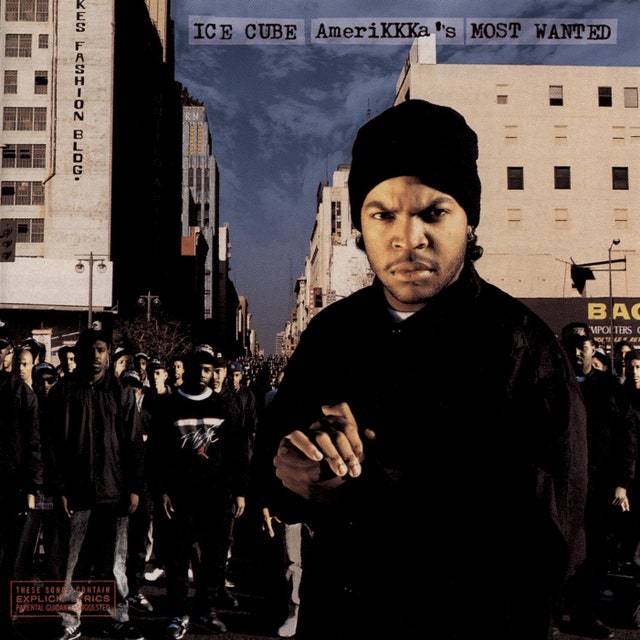





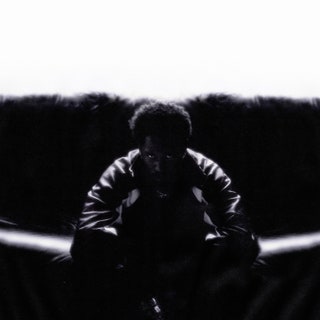
.jpg)

